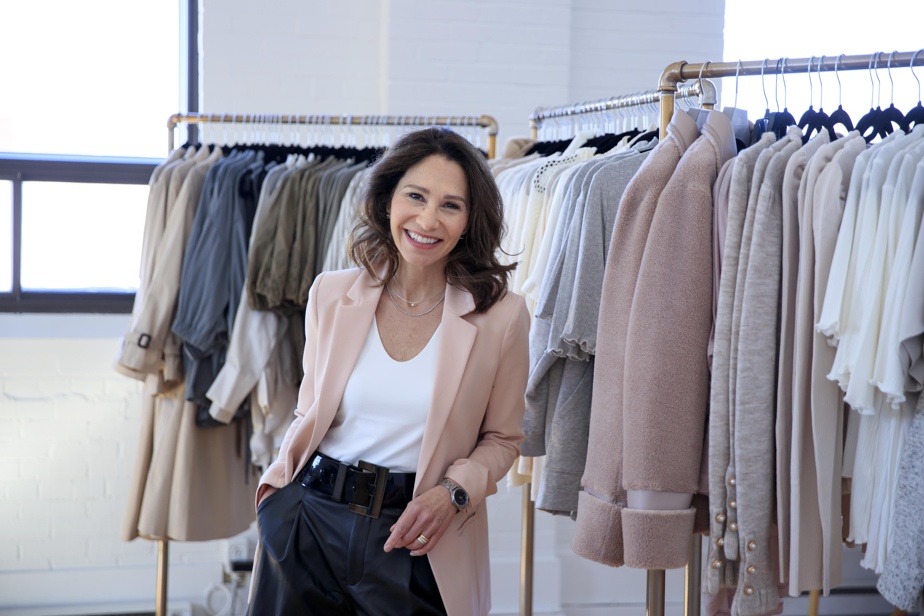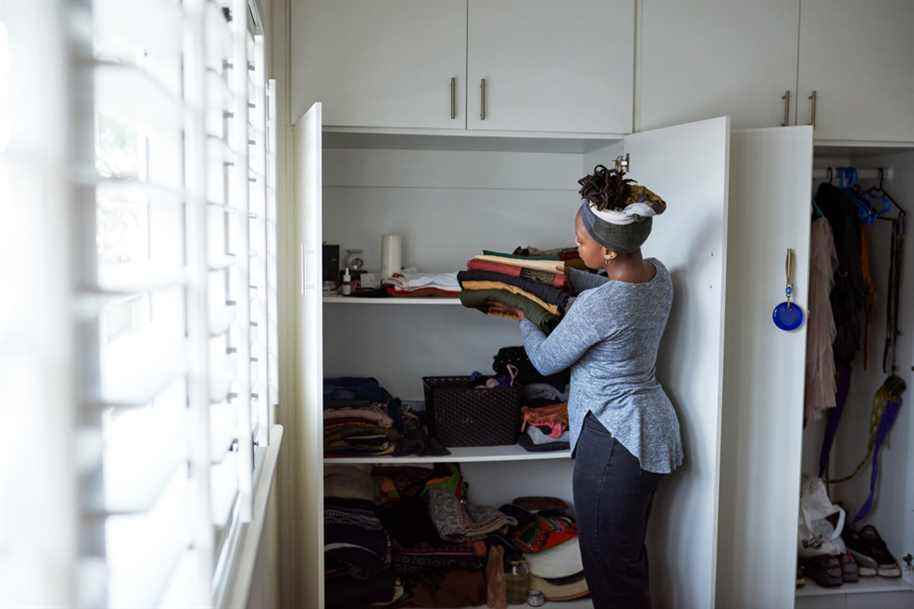Posted yesterday at 4:00 p.m.
According to a November 2021 consumer study by CivicScience of 4,200 Americans, three-quarters of respondents indicated that their wardrobe contains many items of clothing that they will never put back on. Only 15% want to keep their wardrobe as it is. Is this normal?
” It does not surprise me. For two years, we have changed. Our outlook on ourselves and on society has changed, and our clothes must reflect what we have become,” observes stylist Louise Labrecque, author of Your clothes speak.

PHOTO ALAIN ROBERGE, LA PRESSE ARCHIVES
Louise Labrecque
For many people, the pandemic has also caused physical changes. “People don’t fit into their clothes anymore. This is what I see with my clients, a lot of people have gained weight, others have lost it or have changed jobs,” analyzes Marie-Claude Pelletier, president of the styling agency Les Effrontés.
Change of materials
People are now focusing on comfort while remaining concerned about their appearance. We wear fluid, soft and unstructured materials. “All women (men too) want to look casual chic. A professional look, yes, but comfortable. Women no longer want to be skimpy in a suit or a straight skirt, I see a direct link with the relationship with their new body,” says Marie-Claude Pelletier.

PHOTO DARIANE SANCHE, PROVIDED BY LES EFFRONTES
Marie-Claude Pelletier, president of Les Effrontés styling agency
Léa Carle-Bachand, sales consultant at Belle+Rebelle, a store that specializes in Quebec designers, says she received a large quantity of cotton swabs last fall. “We are really looking for comfort, there is a difference with the collections from two years ago. Loungewear [lounge wear] are successful, but the cuts are more feminine, more elegant. We have a lot of tunic dresses, and the fabrics are very soft, like rayon from bamboo which is very comfortable to wear. »
Designer Melissa Nepton dropped jackets from her collections, which were among her top sellers before the pandemic. “We reviewed our philosophy and made a shift towards comfort. Yet we always dress the same client,” she says. “The look of women has changed, the wardrobe is more relaxed than structured. We want to be beautiful and comfortable. For example, we are going to wear a loose dress with which we will look good in Zoom, but which will also be practical for taking care of young children or going grocery shopping. It can be worn from morning to evening in all circumstances. »
-

PHOTO FROM SIMONS WEBSITE
Loose striped sweater, Simons, $69
-

PHOTO FROM TRISTAN’S WEBSITE
Hooded sweater, Tristan, $110
-

PHOTO FROM MASSIMO DUTI WEBSITE
Polo sweater, Massimo Duti, $79.90
-

PHOTO FROM SIMONS WEBSITE
Striped sweater, Simons, $39.95
-

PHOTO FROM RW & CO WEBSITE
Sweater, square neck, RW & CO, $48.93
-

PHOTO FROM EVE GRAVEL WEBSITE
EAMES tunic-style top, Eve Gravel, $172.80
-

PHOTO FROM TRISTAN’S WEBSITE
Small patterned shirt, Tristan, $95
-

PHOTO FROM SIMONS WEBSITE
Recycled cotton sweater, Simons, $39
1/8
Clothes are less segmented, says Louise Labrecque. “We will wear them as much for work (telecommuting) as for evenings and weekends. Everything is mixed up. »
Indeed, the line is increasingly thin between the different spheres of our lives, and companies were already reviewing their dress codes before the pandemic. “A lot of them ask me to do presentations on new dress codes to find out what’s appropriate and what’s not. It all depends on the environment in which you work. A well-groomed image is important in business, finance and law, for both men and women,” explains Marie-Claude Pelletier.
Enough slack!
Stylist Louise Labrecque observes that even though the casual style is ubiquitous, many people are tired of clothes that are too “loose”. “We want to make an effort, men and women, because it’s good for morale, and above all, we want to wear color, like blue, mauve, pink. When we look at the screen in videoconferences, the color passes better than beige. »
An opinion shared by Marie-Claude Pelletier. She thinks that in the long run, the limp or pajama look is depressing. “When you pass in front of the mirror, with your blouse and your pajama bottoms, it’s not good for your self-esteem, even if you live alone. »
She understands that people want to change their wardrobe, because very often there is only gray, black and white. “We have become ultra-conscious of our image, because we watch each other a good part of the day in videoconference! We judge our hair, our complexion, and many have said to themselves: “I’m tired of looking at myself, I have to find better looks.” And that goes through color in particular. »
More than ever, we want to show off on screen. “When you feel good, you will gain confidence and you will interact differently. We often think that clothes are superficial. This is false, because there is a real impact on self-confidence, even in telework. »

